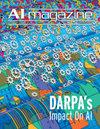保护隐私的卷积Bi-LSTM网络用于加密时间序列医学图像的鲁棒分析
IF 2.5
4区 计算机科学
Q3 COMPUTER SCIENCE, ARTIFICIAL INTELLIGENCE
引用次数: 0
摘要
深度学习(DL)算法可以改善医疗保健应用程序。DL改善了医学影像诊断、治疗和疾病管理。在敏感的医学图像上使用深度学习算法会带来隐私和数据安全问题。在保护病人匿名的同时提高医学成像水平是很困难的。因此,深度学习模型训练和推理的隐私保护方法越来越受欢迎。这些图像序列使用最先进的计算机辅助检测/诊断技术(CAD)进行分析。将医疗照片上传到服务器的算法会带来隐私问题。本文提出了一种卷积Bi-LSTM网络来评估完全同态加密(HE)时间序列医学图像。从秘密图像序列中,卷积块学习提取选择性空间特征,基于bi - lstm的分析序列层学习编码时间数据。加权单元和序列投票层使用不同权重的地理位置来提高效率并减少错误诊断。两个严格的基准——CheXpert和BreaKHis公共数据集——说明了该框架的有效性。该技术优于许多竞争对手的方法,两个数据集的精度都在0.99以上。实验结果表明,所提出的轮廓可以从加密的医学图像序列中提取视觉表征和序列动态,在保护隐私的同时获得良好的医学图像分析性能。本文章由计算机程序翻译,如有差异,请以英文原文为准。
Privacy-Preserving Convolutional Bi-LSTM Network for Robust Analysis of Encrypted Time-Series Medical Images
Deep learning (DL) algorithms can improve healthcare applications. DL has improved medical imaging diagnosis, therapy, and illness management. The use of deep learning algorithms on sensitive medical images presents privacy and data security problems. Improving medical imaging while protecting patient anonymity is difficult. Thus, privacy-preserving approaches for deep learning model training and inference are gaining popularity. These picture sequences are analyzed using state-of-the-art computer aided detection/diagnosis techniques (CAD). Algorithms that upload medical photos to servers pose privacy issues. This article presents a convolutional Bi-LSTM network to assess completely homomorphic-encrypted (HE) time-series medical images. From secret image sequences, convolutional blocks learn to extract selective spatial features and Bi-LSTM-based analytical sequence layers learn to encode time data. A weighted unit and sequence voting layer uses geographical with varying weights to boost efficiency and reduce incorrect diagnoses. Two rigid benchmarks—the CheXpert, and the BreaKHis public datasets—illustrate the framework’s efficacy. The technique outperforms numerous rival methods with an accuracy above 0.99 for both datasets. These results demonstrate that the proposed outline can extract visual representations and sequential dynamics from encrypted medical picture sequences, protecting privacy while attaining good medical image analysis performance.
求助全文
通过发布文献求助,成功后即可免费获取论文全文。
去求助
来源期刊

Ai Magazine
工程技术-计算机:人工智能
CiteScore
3.90
自引率
11.10%
发文量
61
审稿时长
>12 weeks
期刊介绍:
AI Magazine publishes original articles that are reasonably self-contained and aimed at a broad spectrum of the AI community. Technical content should be kept to a minimum. In general, the magazine does not publish articles that have been published elsewhere in whole or in part. The magazine welcomes the contribution of articles on the theory and practice of AI as well as general survey articles, tutorial articles on timely topics, conference or symposia or workshop reports, and timely columns on topics of interest to AI scientists.
 求助内容:
求助内容: 应助结果提醒方式:
应助结果提醒方式:


